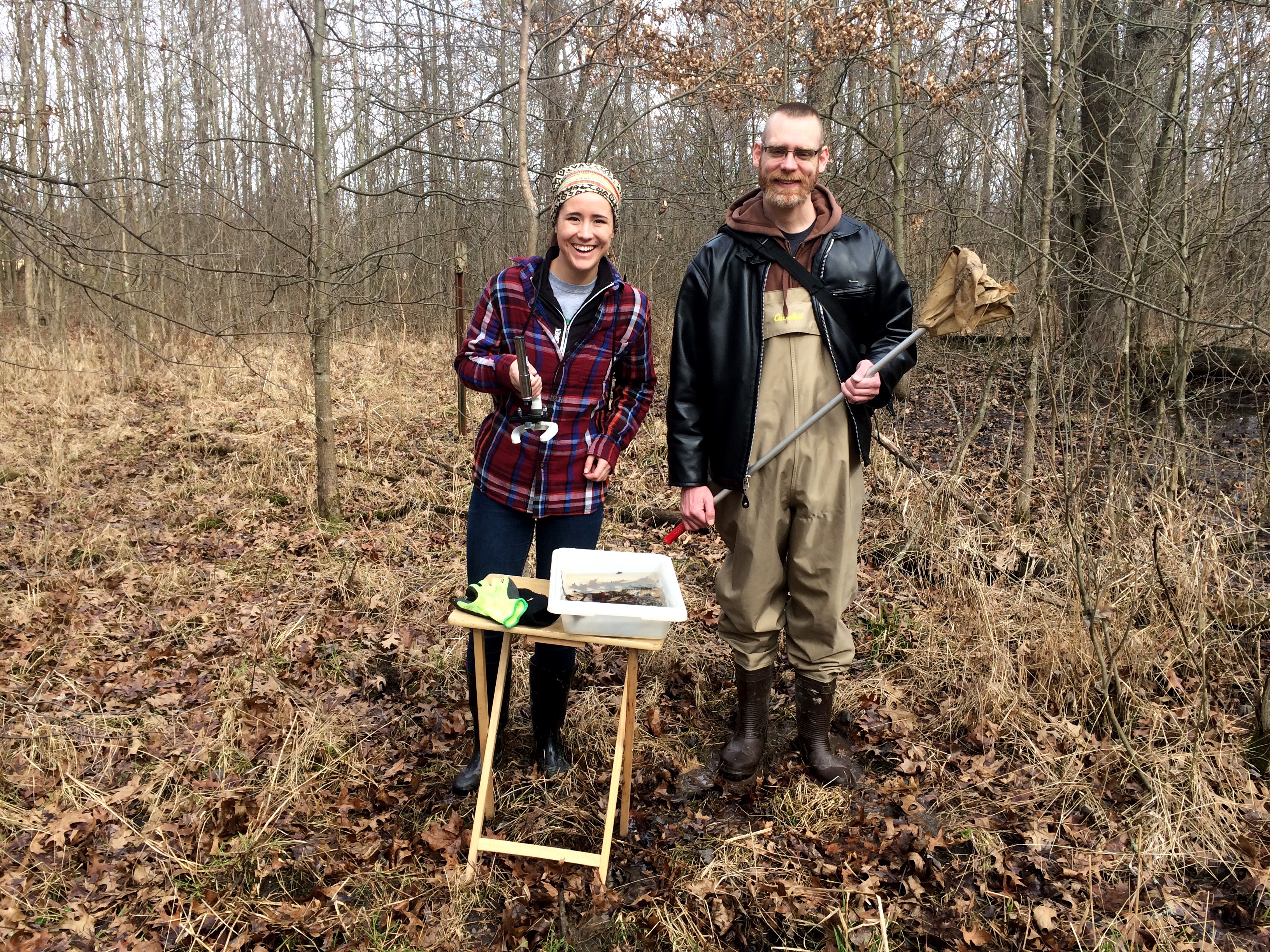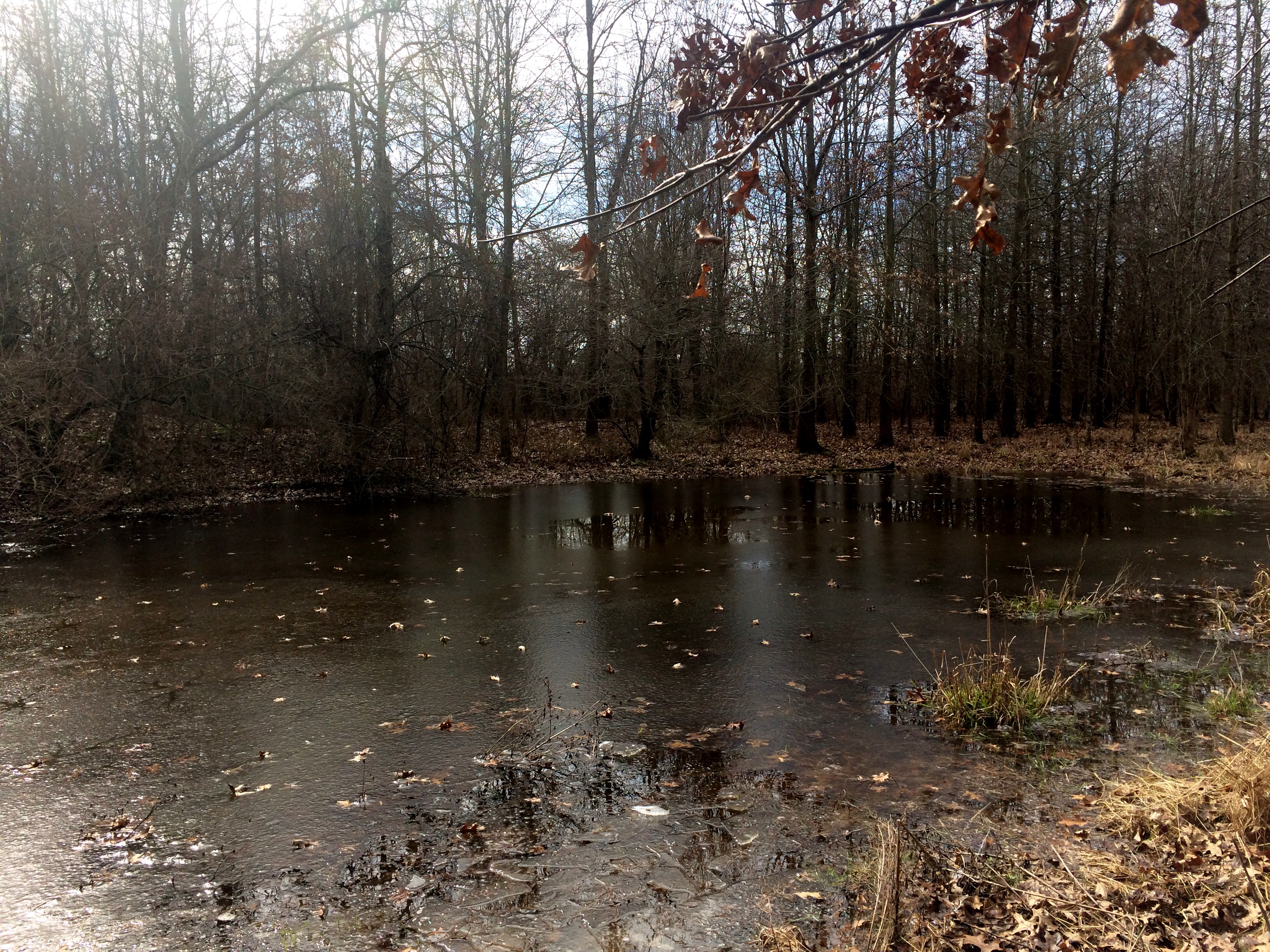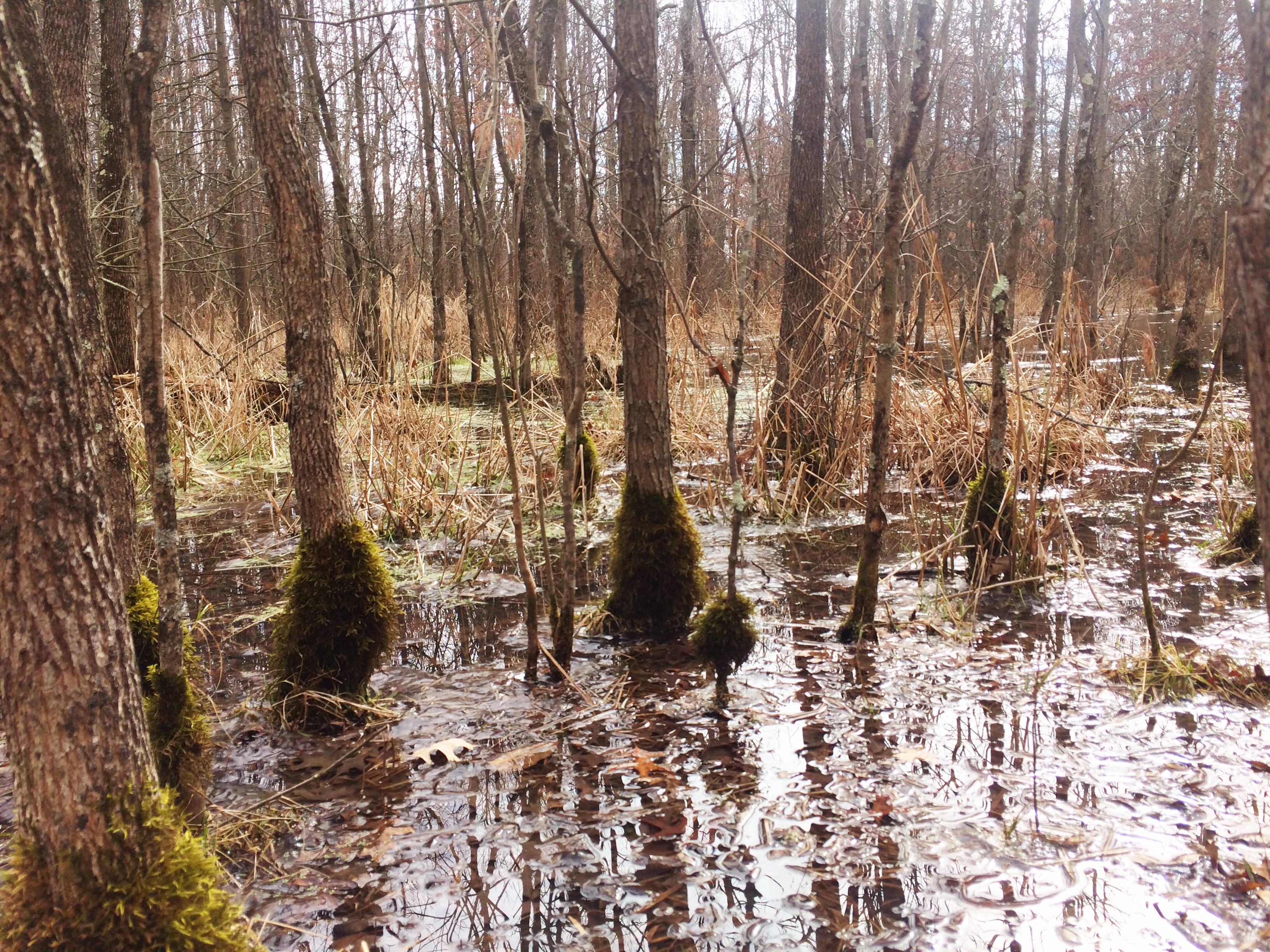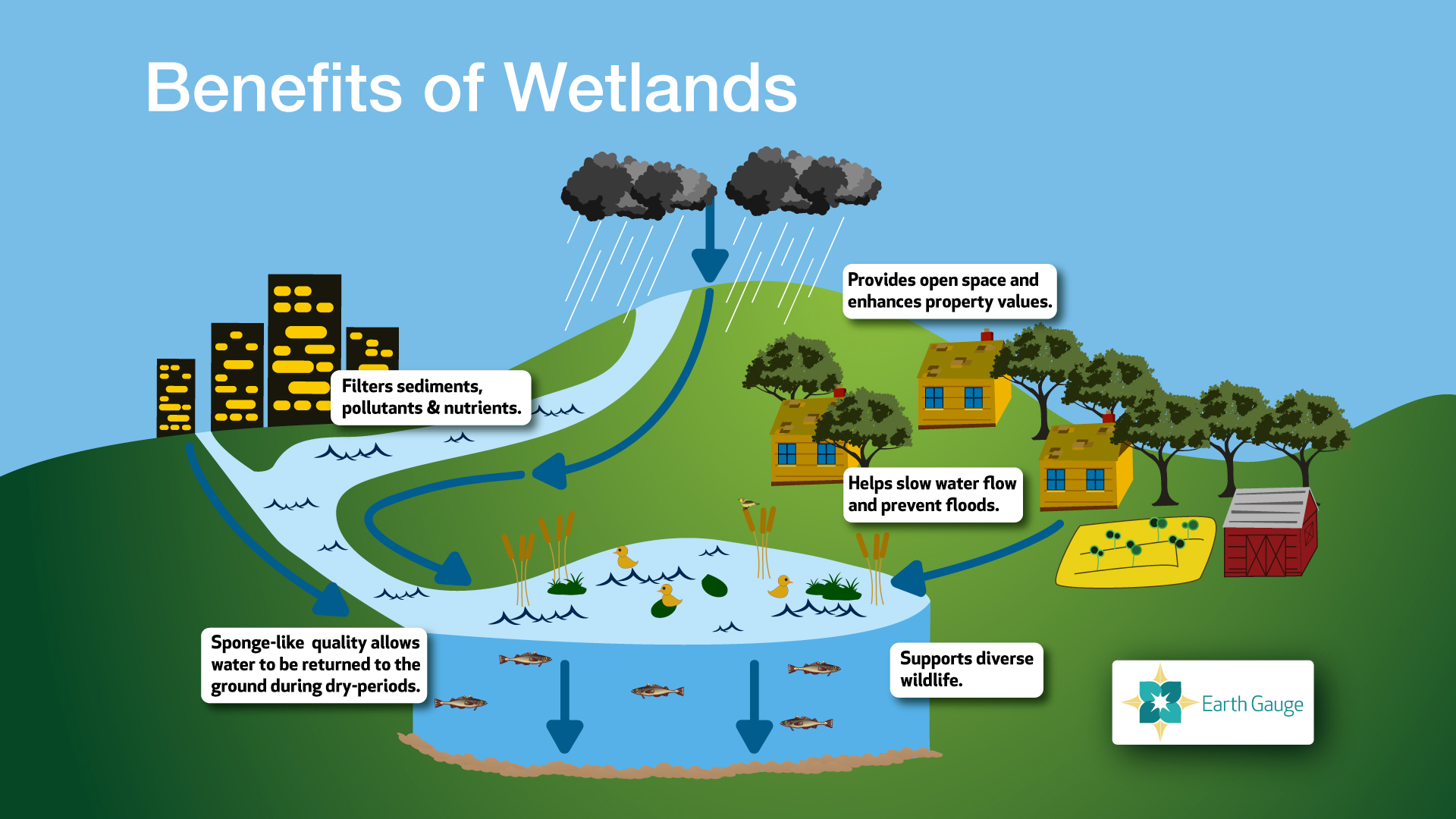 This past weekend I had an opportunity to visit a few vernal pools near Hoover Reservoir in Galena, Ohio. Myself, along with staffer Elissa Yoder Mann, were lucky enough to have the Vernal Pool Guru himself, David Celebrezze, lead us on this field visit. We visited the vernal pools to observe the biodiversity present during the unseasonably warm winter/spring months.
This past weekend I had an opportunity to visit a few vernal pools near Hoover Reservoir in Galena, Ohio. Myself, along with staffer Elissa Yoder Mann, were lucky enough to have the Vernal Pool Guru himself, David Celebrezze, lead us on this field visit. We visited the vernal pools to observe the biodiversity present during the unseasonably warm winter/spring months.
The site contains several vernal pools, a few of the pools near the front of the reserve are man-made vernal pools, with a pipe and drainage system that were installed as a form of mitigation. In the back of the reserve, surrounded by a healthy wooded ecosystem, there are two extremely healthy long-term vernal pools. In the first pool there were several macroinvertebrate species that indicated good water quality, and in the next we observed even more species. In total we observed isopods, copepods, planeria, and dalphnia.

 Isopod
Isopod
 Copepod
Copepod 
Photos courtsey of David Celebrezze, Vernal Pool Guy
What exactly are vernal pools you may wonder? Vernal pools are temporary wetlands that provide habitat for many plants and aquatic animals. These pools are covered with water for part of the year, often from winter to early summer. They serve as essential breeding grounds for certain species, including frogs and salamanders, since these temporary ponds don’t have predatory fish. Amphibians are one of the most important yet highly threatened species in the world right now! Protecting vernal pools is one way we can help mitigate this. Vernal pools are very susceptible to soil and organic matter disturbance, and recreational disturbances too.
I was very pleased to see that such a healthy ecosystem has been able to survive, especially so close to a metro area. This will lead to an increased ecosystem wealth in the park, as amphibians have already begun to move from the natural vernal pools to the newer, man-made pools of the park. Vernal pools are one of the more unique forms of wetlands, and certainly one of the most critical, since they support such a wide variety of life under such specific conditions.
For more information about vernal pools, please visit the Vernal Pool Guy website at: http://www.vernalpoolguy.org
by Nicole Tabit, Clean Water Fellow
